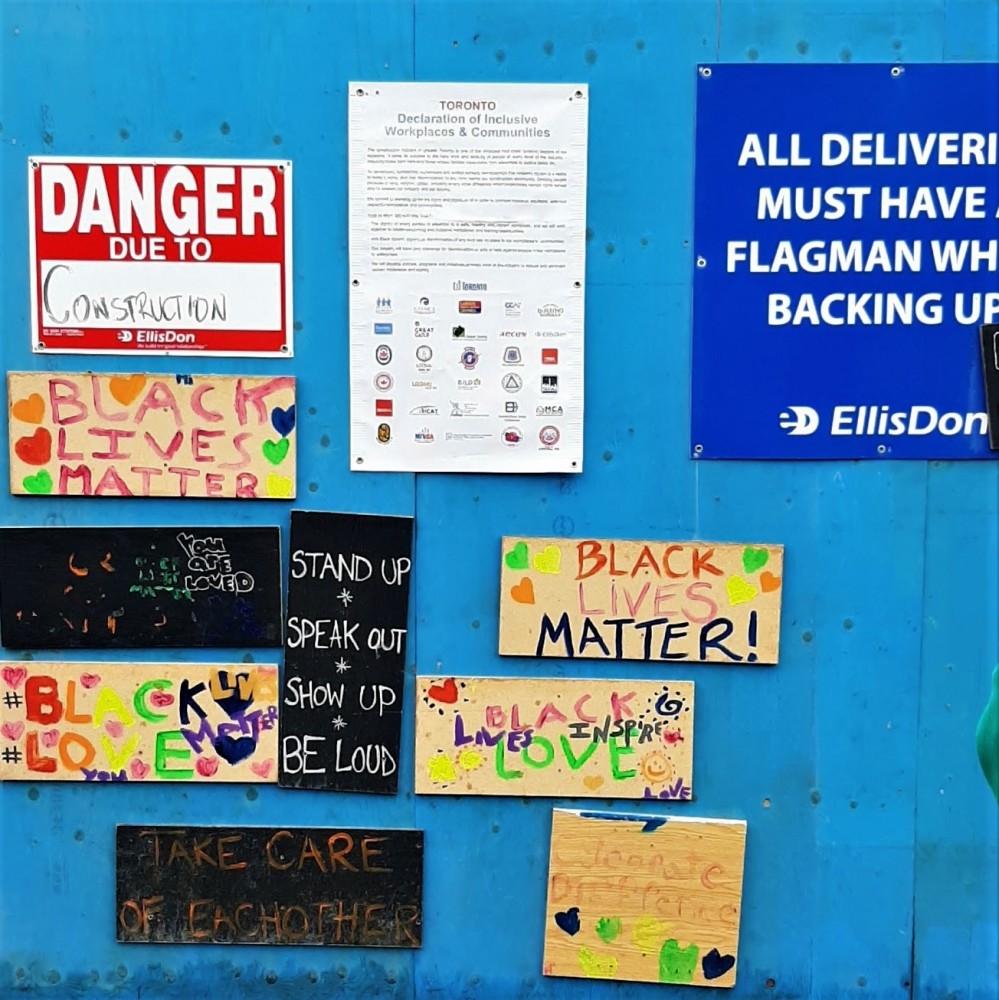
The GTA’s booming construction industry & its problem with race
Quoc Truong, who arrived in Canada as a young boy after his family fled communist Vietnam, recalls the notoriously tough construction sites he started working at a decade ago. He was the only visible minority on the job, in an industry known for its harsh culture.
“When I first started, I was the only Vietnamese steamfitter,” the former refugee told The Pointer. “Looking around, I never felt like I fit in.”
A decade later, in the midst of a North America-wide reckoning on race, a series of ugly incidents at GTA worksites has forced the industry to confront an issue it has ignored for generations.
While the macho, homogenous world of policing was thrust into the spotlight once again last summer following the killing of George Floyd, the local construction industry escaped similar scrutiny, despite the appearance of nooses left at a number of job sites.
The knotted ropes, conjuring centuries of inhuman, murderous attitudes against Black communities, were a racist warning to the GTA’s diverse members, particularly Black residents: Stay out of our territory!
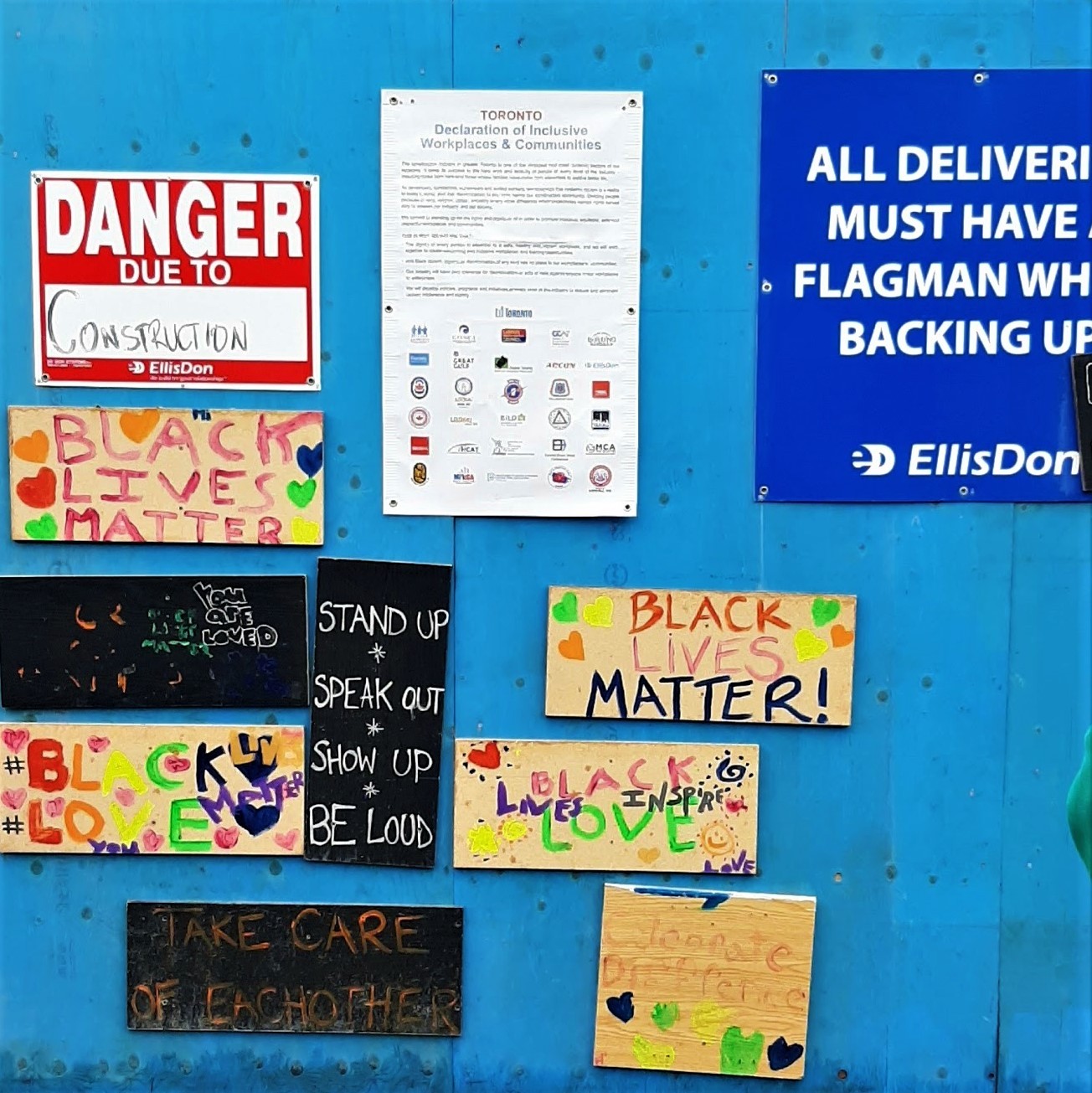
A string of recent racist incidents involving nooses left at construction sites across Toronto has led to calls for the industry to take a stand against decades-old racist attitudes within the sector.
Trades unions alongside workers like Truong have been pushing to make worksites, traditionally the domain of white labourers, inclusive and safe for everyone.
Calls for industry leaders to combat racism and the lack of diversity in the sector spiked last year after the nooses were left next to hateful messages that were found at several construction worksites around Toronto.
The actions have continued, with the most recent incident on March 10, when a worker hung a noose at the Eglinton Crosstown LRT construction site. The man who did it, according to investigations by the construction company Crosslinx and Toronto Police, was terminated, said Chris Campbell, the Equity and Diversity Representative for the Carpenters' District Council of Ontario (CDCO).
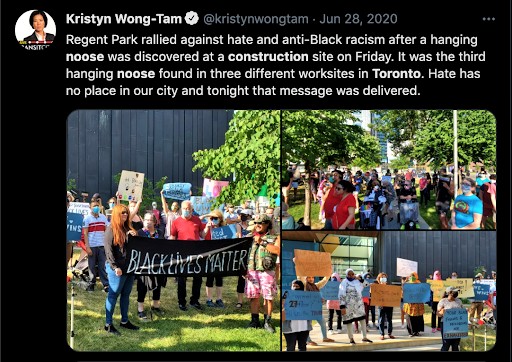
Nooses were found at construction sites since June, around the height of the Black Lives Matter movement sweeping across North America. Toronto City Councillor Kristyn Wong-Tam showcased acts of solidarity and protest that cropped up across the city since the nooses were first seen.
“I raise my hand to them – 30 years ago in my days, you just keep your head down and keep working,” said Campbell. “Back then, you were lucky to get on a project – you could count on one hand the amount of workers of colour that were there. Now, you have a lot more push back. If management takes a strong stand, it will send a message to the folks who have different philosophies and ways of thinking that show their hate.”
The mounting attention and pressure by the public and industry workers led to the creation of the Toronto Declaration of Inclusive Workplaces & Communities, an industry-wide response that penned the statement in solidarity with construction workers. The declaration, which was supported by the City of Toronto, construction unions and companies, affirms that systemic racism threatens the health and safety of construction workers and it condemns discrimination or acts of hate of any kind.
“We have met with workers, developers, contractors, unions, and associations to create this Declaration and take a stand together against any form of hatred in our city,” said Toronto Mayor John Tory in a February 24 press release. “This past year, when nooses were found on construction sites in Toronto, we recognized the tragic reality that anti-Black racism continues to exist in our society and that we need to keep doing all we can to bring an end to it. This Declaration was a result of those meetings and an important step in the industry's plan to move forward, support their employees, and to build a more inclusive workplace for everyone."
The GTA seems an ideal area for the initiative, where 40 percent of unionized construction workers are immigrants, and visible minorities represent 22 percent of the sector, the highest figure of all jurisdictions in the province, according to the 2019 Demographics & Diversity Report from the Ontario Construction Secretariat.
But these numbers fall far short of the overall demographics in parts of the GTA. In Toronto, visible minorities make up about 52 percent of the population and in Peel they account for almost two-thirds of all residents.
Across the province, visible minorities account for only 11 percent of Ontario’s unionized construction sector and 17 percent of the non-unionized sector.
There are abysmal rates of representation of women as well. Female participation in on-site occupations and skilled trades is just 3 percent, while Indigenous Peoples also account for 3 percent of the construction workforce in Ontario, which is a slightly higher representation than the overall labour force (2.3 percent).
These numbers include Peel, where the declaration rings hollow for some who simply do not see the region’s demographics reflected in one of the most visible and lucrative local industries.
Advocates like Truong and Campbell say launching similar initiatives in diverse communities such as Peel is crucial to opening up high-paying construction work to residents and protecting them from discrimination on the job.
“I think it's been swept under the rug for too long,” Truong says. “I think we as leaders of the industry need to be in the forefront of this. There is systemic trauma, there is a need to change, and there is a need to hire more [equitably].”
Truong works as a program manager for the Hammer Heads initiative, a strategy that helps connect at-risk youth and young people from under-resourced communities in the GTA with apprenticeships and work opportunities in the trades. Over 512 graduates have moved through the program since its launch in 2009, including 15 kids from a pilot project in Peel almost two years ago, with many of them still in the industry today.
“Our biggest problem with getting kids from Peel is transportation, because our job sites are across the board of the GTA,” Truong says. “Construction starts really early, from 6-o'clock to 6:30 in the morning. Public transportation doesn’t allow these kids to get to their job site on time, so some of these kids would have to leave at three, four o'clock in the morning and then transfer over to Toronto.”

Truong is a program manager for the very same initiative that got his foot in the door, after overcoming significant cultural stigma and economic barriers to entry. He hopes to see more focus on Peel.
“My parents [and I], we came on a boat to come to Canada,” he recalls. “My parents looked down upon me and frowned upon me, saying ‘Why not be a doctor or lawyer? We’ve come this far, [just] for you to be a construction worker’. That stigma has got to change, inhouse as well as in our local communities.”
Cultural stigma within particular ethnic groups against work in the trades is one of the many barriers that prevent visible minorities from joining a primarily white sector. This, alongside the inability to travel frequently and reliably, having no connections in the field and, for some youth, the lack of educational pathways into lucrative construction careers, block many young people from an industry that, according to Statistics Canada, has average wages of about $36 an hour, which amounts to almost $75,000 a year.
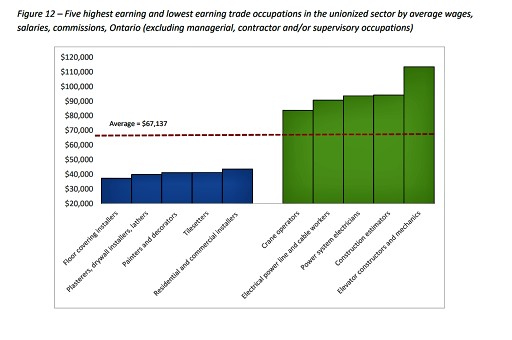
Construction workers, on average, made far more than the average Ontario salary in 2020, which sat at $49,800. The lucrative work is known to be physically demanding, and can result in injuries or even death if done in hazardous conditions or improperly.
“It's difficult to even get into the trades sometimes for some folks,” said Campbell, a Brampton resident. “We take it for granted that everyone is an open door to everyone but there's ways to stop... you in your tracks without you even knowing, while other folks just walk straight through the door.”
Of Peel’s estimated 1.6 million residents, at least 51.5 percent are immigrants, with 73.3 percent of Brampton’s population alone identifying as visible minorities as of the 2016 Census. These numbers are already outdated and are expected to move in the same direction in line with trends over the past three decades, as Peel’s population is projected to increase by almost one million residents by 2046, the fastest growth rate within the province.
Development in the region is booming, from subdivision projects in Brampton to massive high-rise and mid-rise plans across Mississauga, along with news of healthcare expansion and other public-sector builds across Peel. As Westport Condos and Gordon Woods condos go up in Mississauga, the Hurontario LRT project will be well underway and Brampton’s Shoppers World redevelopment should break ground soon, to name just a few of the dozens of construction opportunities taking shape. Mississauga in particular, with $45 billion of construction value set to be invested within two decades, is a hotbed for activity in the industry.
Workers and residents alike are looking to Peel for long-term, lucrative employment opportunities that in the past have not been spread out equally.
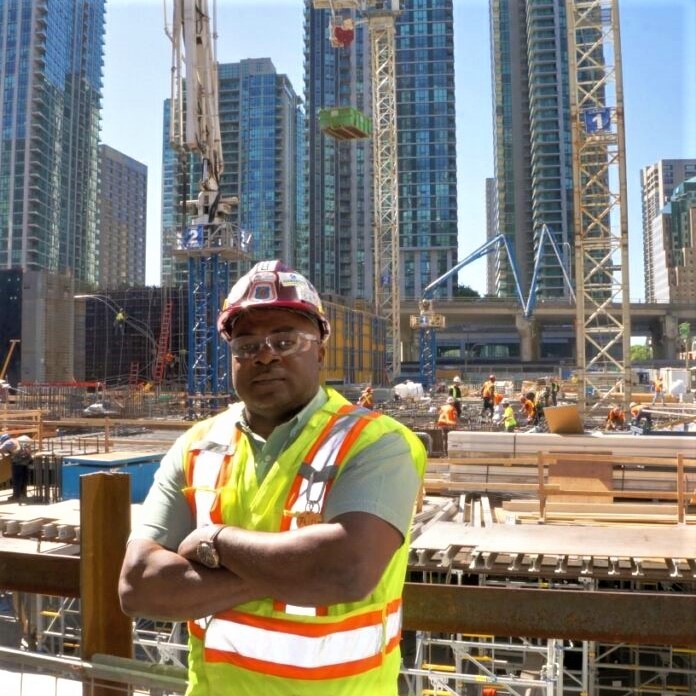
Brampton's Chris Campbell was named the Equity and Diversity Representative for the Carpenters' District Council of Ontario last year.
“The Region has been actively working towards creating inclusive workplaces and communities but has not formally declared it in the way the City of Toronto has,” said Juliet Jackson, director of culture and inclusion at the Region of Peel. “Since Regional Council recognized Anti-Black Racism as a crisis in Peel and affirmed its commitment to address systemic discrimination in June of 2020, significant effort has gone into creating safe spaces for courageous conversations where employees shared their experiences and identified opportunities for change.”
The problem with these types of pronouncements from bureaucrats and local elected officials is they lack tangible actions that lead directly to results. The words sound nice, but what do they really mean?
Anti-Black racism in Peel is being addressed through non-profit funding, conducting workforce training and development of anti-racism information to understand inequities. The Region says it plans to continue leveraging partnerships with community stakeholders, but there is no specific mention of supporting equity and inclusion directives in specific job sectors within the Region of Peel’s documents.
Based on 2018 Employment Survey Bulletin data, Peel is home to 1,365 construction-based businesses. But construction was only 11th on the list of job sectors in order of local participation among the region’s residents, with 21,484 employed in the industry. A new workforce census was done in the fall of 2020, and is expected to be reviewed by “executive leaders” in the coming weeks, according to Jackson.
It’s not clear if a similar construction industry declaration issued in Toronto, to help push for better representation and protection of visible minority workers, will be made in Peel. Truong and Campbell are quick to point out that such declarations don’t automatically signal change.
In the most recent effort to address systemic racism, family violence and mental health and addictions as a whole, the Region has adopted a Community Safety and Wellbeing Plan (CSWB) since October of last year, which Jackson says will also help address discrimination across the Region in a collaborative and coordinated way.
The Province, under the previous Liberal government, issued a directive to all municipal regions that a CSWB had to be developed and submitted to Queen’s Park. Peel’s work was in compliance with this provincial order, but it remains to be seen how it will be funded, whether Regional Council will make it a budget priority and if any specific action will be taken.
Critics in the diversity and inclusion space, fighting for equal opportunities which have been denied to diverse groups for decades, causing significant economic disparities, routinely call out government initiatives for being little more than lip service.
Jackson said the public will be able to measure any progress.
“This plan will support the implementation of policies and practices such as supplier diversity, allowing Peel to influence many sectors including construction. Progress on Peel’s work in this area will be reported publicly through Regional Council.”
According to the plan document: “There is a need to hold institutions, including us as CSWB partners, accountable for real change.” It was developed in collaboration with police, social service providers, education, local municipalities and health care providers. No construction unions were listed as participants in the design of the CSWB, but detailed plans to work on creating and strengthening additional youth programs, collecting sociodemographic data within an increasing number of organizations and building partnerships with community members are hopeful indicators in the framework that suggest the capacity and political will to engage the construction sector meaningfully for Peel residents is there.
Creating more opportunities for youth to get involved and investing in prominent trades-based learning centres to keep talent in the region are just two ways Campbell says the Region can get involved to create an immediate impact on the construction sector in Peel. Campbell, who is part of the Carpenters’ Union Local 27 that covers the GTA, says he’s hopeful to work with Peel and its cities to create more diverse workplaces.
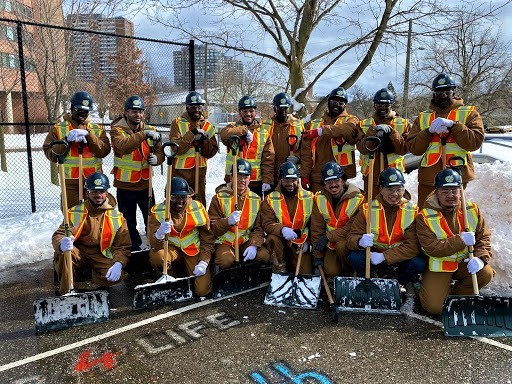
Campbell says programs that engage with youth directly, like Hammer Heads, are crucially needed to give them the resources they need to get into the industry. Pictured is the latest graduating cohort of the Hammer Heads program.
“I've done [a deputation] in Toronto, I’m happy to do it here,” said Campbell. “Whether it means to go down and talk to the mayors or city councils, or be supportive of any local or community organization, and I'd be happy to write if it means if it's going to improve things.”
Beyond collaboration, Truong says change can directly start with the wording of construction contracts.
“The Region of Peel needs to put language in hiring – that they have to hire local, they have to hire people of colour, and hire from different groups,” says Truong, whose family lives in Peel.
“Any contractor they hire, they have to have an equity hiring clause in there. Once you do that then the contractors have to hire diverse groups. That's why we got to advocate for that – if we don't do that, it's not ever gonna work because, especially in construction, they don't really like change. It's a very old school mentality.”
Email: [email protected]
Twitter: @vanessabalintec
COVID-19 is impacting all Canadians. At a time when vital public information is needed by everyone, The Pointer has taken down our paywall on all stories relating to the pandemic and those of public interest to ensure every resident of Brampton and Mississauga has access to the facts. For those who are able, we encourage you to consider a subscription. This will help us report on important public interest issues the community needs to know about now more than ever. You can register for a 30-day free trial HERE. Thereafter, The Pointer will charge $10 a month and you can cancel any time right on the website. Thank you.
Submit a correction about this story


